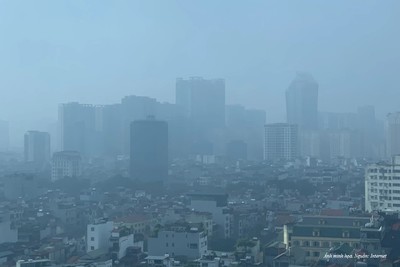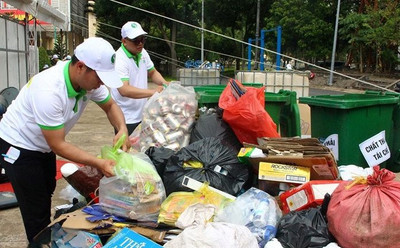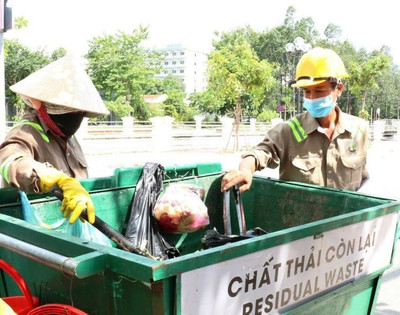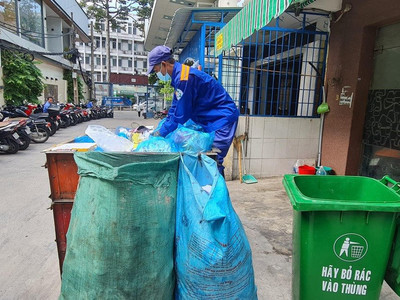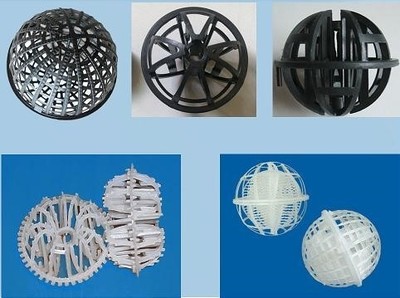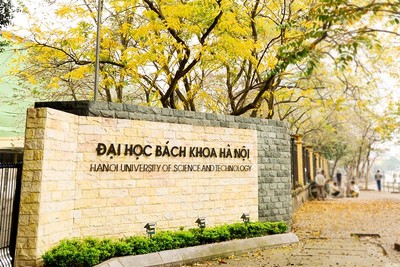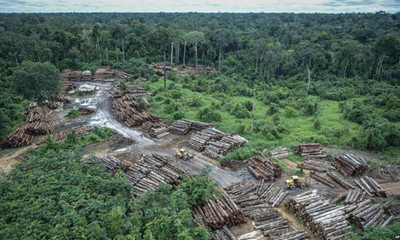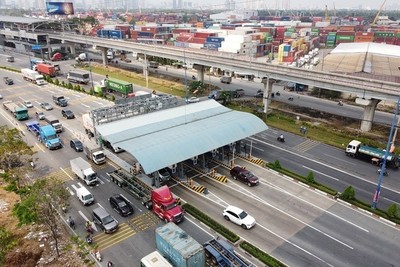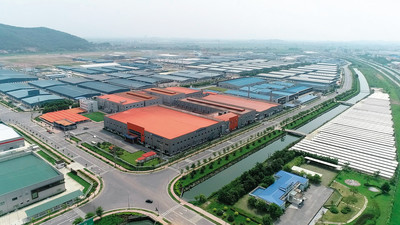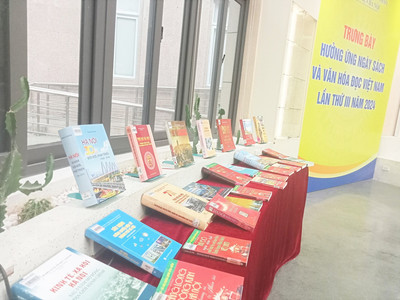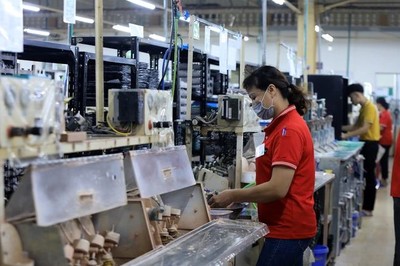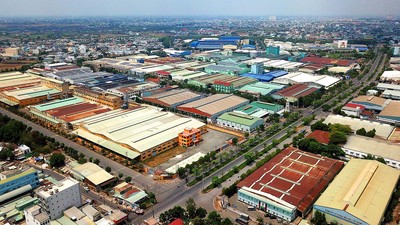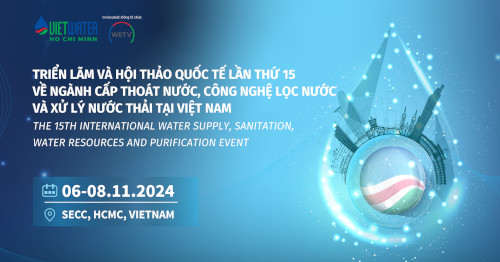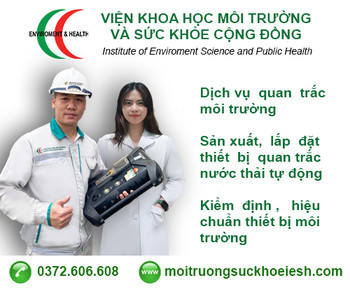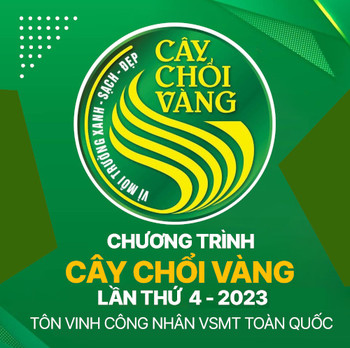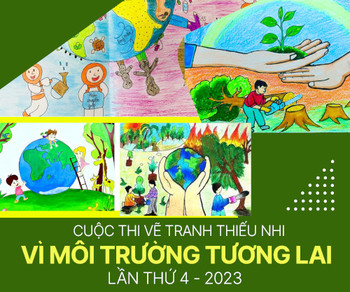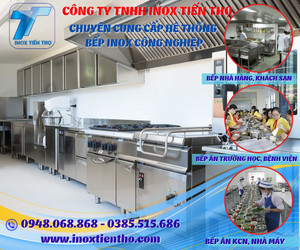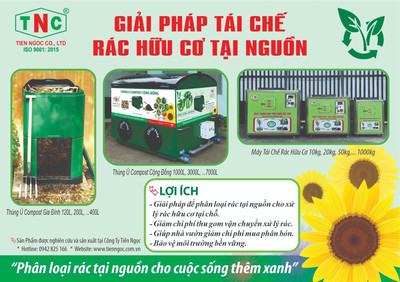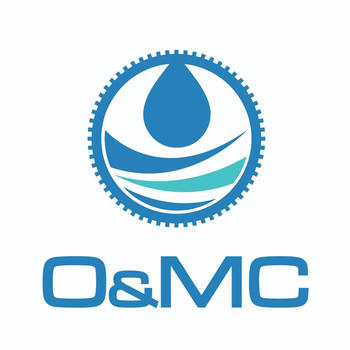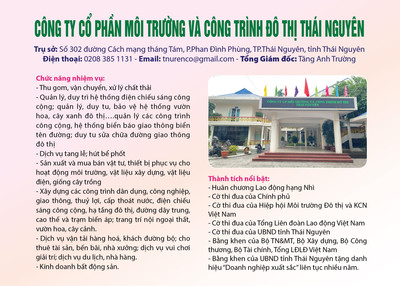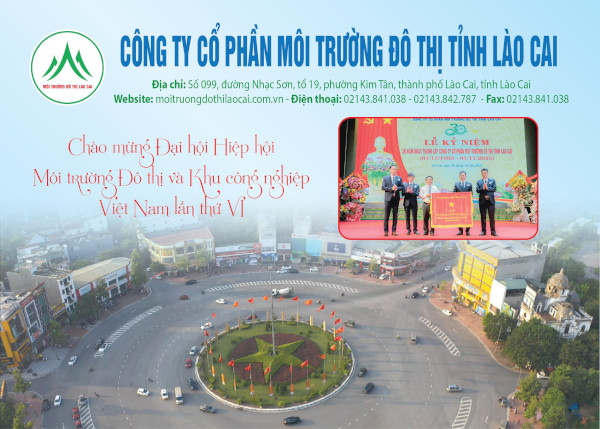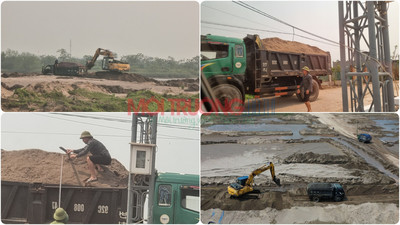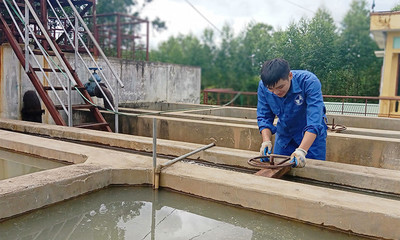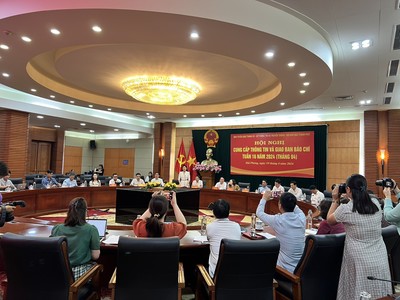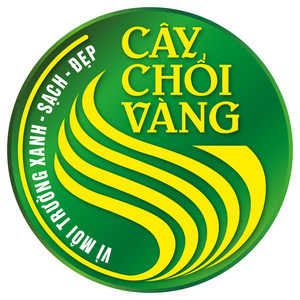Công bố quốc tế lĩnh vực môi trường số 14-2022
Trân trọng giới thiệu tới quý độc giả Công bố Quốc tế lĩnh vực môi trường số 14-2022 với các công trình nghiên cứu của các nhà khoa học nổi tiếng từ nhiều quốc gia khác nhau và đã được công bố trên những tạp chí uy tín thế giới.
Công bố Quốc tế lĩnh vực môi trường số 14-2022 bao gồm 15 bài nghiên cứu về quản lý môi trường, 16 bài về môi trường đô thị và 16 bài về môi trường khu công nghiệp. Đặc biệt trong số 16 nghiên cứu về môi trường đô thị có nghiên cứu với chủ đề "Quản lý chất thải rắn đô thị: Động lực học, đánh giá rủi ro, ảnh hưởng sinh thái, tiến bộ, hạn chế và quan điểm" đã được công bố trên tạp chí khoa học Science of The Total Environment, Số 814, ngày 25/3/2022.

Trong phần tóm tắt, các tác giả cho biết: Tiêu thụ năng lượng toàn cầu ngày càng tăng cùng với tăng trưởng kinh tế, gây áp lực lên việc cung cấp các nguồn năng lượng tái tạo trên thế giới. Chất thải rắn sinh hoạt đô thị (CTRSH) đã được báo cáo ảnh hưởng to lớn đến việc cải thiện môi trường an toàn và các nguồn tái tạo. Sự khan hiếm năng lượng và các phương pháp xử lý CTRSH thông thường ở các nước đang phát triển dẫn đến nhiều vấn đề về môi trường và kinh tế.
Trước thực trạng đó, các nhà khoa học đã thử nghiệm nhiều công nghệ chuyển đổi chất thải thành năng lượng (WtE). Trong nghiên cứu nói trên, các nhà khoa học đã nêu bật và đánh giá các công nghệ WtE để chuyển đổi CTRSH và các nguyên liệu thô khác thành điện, khí hydro, cồn sinh học cùng với các sản phẩm có giá trị gia tăng khác như phân bón, hóa chất nền tảng thân thiện với môi trường.
Nghiên cứu đã tóm tắt một cách toàn diện các động lực, đánh giá rủi ro, ảnh hưởng sinh thái, những tiến bộ, hạn chế và quan điểm nói chung trong lĩnh vực quản lý và xử lý chất thải rắn đô thị. Thông tin mới nhất về ảnh hưởng sinh thái và đánh giá rủi ro trong việc xử lý và vận chuyển chất thải rắn đô thị đã được cung cấp. Các xu hướng tiên tiến liên quan đến việc xử lý các chất ô nhiễm mới nổi và tài nguyên thu được từ chất thải rắn đô thị đã được phát hiện. Nghiên cứu cũng nêu lên các hạn chế và quan điểm để khám phá các khía cạnh kinh tế tuần hoàn dựa trên CTRSH.
Dưới đây là Công bố quốc tế lĩnh vực môi trường số 13-2022 với những nội dung chính như sau:
Về quản lý môi trường
- Các sol khí phía trên lớp dư ảnh hưởng như thế nào đến chiều cao lớp ranh giới hành tinh?
- Khám phá các nguồn và nguy cơ sức khỏe của kim loại ở Bắc Kinh PM2.5: Thông tin chi tiết từ các phép đo trực tuyến dài hạn.
- Đầu tư liên vùng của các công ty niêm yết công khai có thúc đẩy năng suất tổng yếu tố xanh của địa phương không? Một nghiên cứu về tác động hòa giải của các bằng sáng chế xanh ở Trung Quốc.
- Đầu tư trực tiếp của Trung Quốc vào các nước "Sáng kiến Vành đai và Con đường” có làm giảm lượng khí thải carbon dioxide của họ không?
- Mô hình đánh giá vòng đời của các kịch bản cuối vòng đời để giải phóng xây dựng và quản lý chất thải.
- Tách rời ảnh hưởng của các động lực bền vững sinh thái trong việc áp dụng IoT công nghiệp xanh và tác động của các công nghệ sản xuất tiên tiến.
- Tác động của các biện pháp trừng phạt liên quan đến ô nhiễm đối với việc áp dụng công nghệ sản xuất sạch hơn: Mô phỏng dựa trên mô hình trò chơi tiến hóa.
- Chính sách môi trường nghiêm ngặt có làm giảm lượng khí thải CO2 không? Bằng chứng từ các nền kinh tế ô nhiễm cao.
- Năng lượng đô thị Trung Quốc và hiệu ứng tắc nghẽn carbon: Phương pháp phân tích bao trùm dữ liệu và cân bằng vật liệu.
Về môi trường đô thị
- Đặc điểm và nguồn phơi nhiễm Pb qua bụi gia đình từ khu vực đô thị Thượng Hải, Trung Quốc.
- Mục tiêu thực hiện các mái nhà mát mẻ để đô thị thích ứng công bằng với nắng nóng khắc nghiệt.
- Đảo nhiệt đô thị bề mặt được phát hiện bởi nhiệt độ bề mặt đất vệ tinh trong mọi thời tiết.
- 17α-ethynylestradiol và hai liên hợp chính của nó trong bảy nhà máy xử lý nước thải đô thị: Phương pháp phân tích, sự xuất hiện của chúng, loại bỏ và đánh giá rủi ro.
- Ảnh hưởng của khí tượng đối với việc dự báo các chất ô nhiễm đô thị: Khả năng dự đoán lâu dài so với các hiện tượng cực đoan trong một hệ sinh thái đô thị không đồng nhất về mặt không gian.
- Ảnh hưởng của hình thái đô thị đến chất lượng không khí: Ảnh hưởng tổng hợp của các chỉ số về hình thái và quy hoạch đô thị đến khả năng thở của thành phố.
- Tác động của khí thải sinh học từ cảnh quan đô thị lên ôzôn mùa hè và sự hình thành sol khí hữu cơ thứ cấp ở các siêu đô thị.
- Quản lý chất thải rắn đô thị: Động lực học, đánh giá rủi ro, ảnh hưởng sinh thái, tiến bộ, hạn chế và quan điểm.
- Giải độc kim loại dựa trên tảo liên kết với nước thải thành phố: Ảnh hưởng đến hiệu suất quang hợp, sản xuất lipid và phản ứng phòng vệ.
- Quá trình khử nitơ hỗn hợp để tăng cường loại bỏ nitơ trong nước thải đô thị: Đóng góp của quá trình khử nitơ tự dưỡng dị dưỡng / lưu huỳnh và cộng đồng vi khuẩn.
Về môi trường khu công nghiệp
- Khám phá cách hiệu quả để giảm cường độ carbon trong ngành công nghiệp nặng bằng cách sử dụng phương pháp tiếp cận kinh tế lượng bán tham số.
- Mô phỏng về quá trình đồng khí hóa than bitum và bùn công nghiệp trong khớp nối bộ khí hóa tầng cố định đang xuống cấp với khả năng thu hồi nhiệt hợp lý và ứng dụng tiềm năng trong bùn thành năng lượng.
- Tác động của nước thải ngành Giấy & Bột giấy lên hệ thực vật của lưu vực sông tại Jaykaypur, Odisha, Ấn Độ và các tác động sinh thái của nó.
- Phơi nhiễm với formaldehyde trong các ngành công nghiệp và trung tâm chăm sóc sức khỏe: Đánh giá có hệ thống và đánh giá rủi ro sức khỏe xác suất.
- Đánh giá hiệu suất của hỗn hợp sinh khối dựa trên sinh khối polyme-biển để loại bỏ hấp phụ màu xanh malachit từ nước thải tổng hợp.
- Thiết kế hợp lý của các hạt nano PdxAuy sinh học với hiệu suất xúc tác nâng cao cho quá trình điện phân và phân hủy thuốc nhuộm azo.
- Loại bỏ hiệu quả các kim loại nặng trong nước thải công nghiệp với chất xúc tác hoạt tính sinh học mới cho phép tiếp cận lai.
Sau đây là tên và phần tóm tắt các bài nghiên cứu bằng tiếng Anh:
QUẢN LÝ MÔI TRƯỜNG
1. How do aerosols above the residual layer affect the planetary boundary layer height?
Science of The Total Environment, Volume 814, 25 March 2022, 151953
Abstract
We revealed that the absorption aerosol lying below or above the morning residual layer (MRL) promotes (stove effect, heating the MRL layer) or strongly inhibits (dome effect, heating the temperature inversion layer) the development of planetary boundary layer (PBL) after sunrise, while scattering aerosol exhibits similar suppression (surface or aloft umbrella effect) on the PBL regardless of its vertical location. However, the role of different type of aerosols (i.e., strong absorption aerosol and purely scattering aerosol) present from MRL to upper atmosphere remains lacking and therefore, needs to be further explored. Utilizing a large-eddy simulation model constrained by the in-situ observations in urban Beijing, we observed that the dome inhibition of absorption aerosols on PBL development becomes weaker as elevating the aerosol layer, and the effect (virtual dome effect) remains no change beyond a certain height, which is defined as the dome effective height z. This height z is highly related to the surface sensible heat flux. By comparison, the altitude of light-scattering aerosols relative to the MRL was less important. The scattering aerosols exhibit similar inhibition from MRL to upper atmosphere (aloft umbrella effect), but to a weaker extent than the virtual dome effect. The virtual dome effect and aloft umbrella effect play a leading role during some extremely polluted scenarios with deep aerosol layer, such as sandstorms and volcanic eruptions. Aerosol dome, virtual dome, and aloft umbrella effects, together with aerosol stove and surface umbrella effects, further advance the understanding on aerosol-PBL interactions, which is, more broadly, applied to interpret the impact of aerosol on PBL over other ecosystems as well as exoplanet atmospheres.
2. Exploring sources and health risks of metals in Beijing PM2.5: Insights from long-term online measurements
Science of The Total Environment, Volume 814, 25 March 2022, 151954
Abstract
To gain a comprehensive understanding of sources, health risks, and regional transport of PM2.5-bound metals in Beijing, one-year continuous measurement (K, Fe, Ca, Zn, Pb, Mn, Ba, Cu, As, Se, Cr, and Ni) was conducted from December 2016 to November 2017 and Positive Matrix Factorization analysis (PMF) was applied for source apportionment. It was found that the seasonal variation of sources could vary significantly among metals. Sources of Ca, Ba, As, Se, and Cr did not show much seasonal variations, with the contribution of its predominant source higher than 35% in each season. However, the major sources of K, Fe, Zn, Pb, Mn, Cu, and Ni exhibited obvious seasonal variations. In addition, the characteristics of metals in haze episodes were comprehensively investigated. Haze episodes in Beijing were characterized by higher metal concentrations and health risks, which were about 2– 6 times higher than non-haze periods. Moreover, the types of haze episode were different in winter and spring. Haze episodes in winter were mostly influenced by coal combustion, the contribution of which increased greatly and accounted for about 30% of PM2.5. The metals such as K, Zn, Pb, As, and Se significantly increased, which were mainly transported from south of Beijing. During haze episodes in spring, dust was an important source, which contributed to higher concentrations of crustal metals that transported from northwest of Beijing. To quickly and effectively identify source regions of metals in Beijing during haze episodes, a new diagnostic ratio method using Ca as a reference was developed. The ratios of some anthropogenic metals to Ca significantly increased when air mass was mainly from south of Beijing during haze episodes while the ratios remained constantly low in non-haze periods, when local emissions dominated. This method could be useful for rapid identification and control of metal pollution in Beijing.
3. Evaluation of the sustainability of technologies to recycle spent lithium-ion batteries, based on embodied energy and carbon footprint
Journal of Cleaner Production, Volume 338, 1 March 2022, 130493
Abstract
Battery demand is estimated to growth at a 25% annual rate, to reach a volume of 2600 GWh in 2030. Recovering critical raw materials from end-of-life batteries is now mandatory to limit the need of primary raw materials in the long-term.
However, recycling of lithium-ion batteries (LIBs) is still in its early stage. Many technologies have been proposed, that consist of a combination of mechanical processing, often after thermal pre-treatment, ended up to hydrometallurgical or pyrometallurgical processing. All these methods have several pros and cons in terms of applicability, safety, environmental impact, eventual recovery efficiency of the components, and economic factors.
In this frame, the evaluation of the sustainability of the proposed technologies plays a fundamental role in selecting the most suitable approaches able to support material supply for batteries, identifying the major solutions to optimize the end-of-life management strategies for LIBs, in the perspective of a circular economy context. However, LCA was developed to evaluate commercially mature technologies.
This paper aims to propose and discuss, for the first time, the sustainability of 33 different technologies available in literature for LIBs recovery, even if developed only at laboratory level, by a screening approach, preliminary to LCA analysis. For this purpose, ESCAPE (standing for Evaluation of Sustainability of material substitution using CArbon footPrint by a simplified approach) tool based on the calculation of embodied energy and carbon footprint is used.
Based on ESCAPE analysis results, this work shows and discusses the parameters that affect the technologies sustainability (thermal and mechanical treatments and chemicals and water use). The results, in accord with preliminary available LCA data, indicate that chemicals and ultrapure water consumption are the most energy-intensive processes drivers, showing that pyrometallurgy can limit carbon footprint and energy consumption in comparison to hydrometallurgy. Finally, by using the ESCAPE index, it is shown that some technologies may be improved for example by using industrial water instead of ultrapure water and/or by recycling the chemicals used for leaching steps.
In summary it is shown that ESCAPE tool can be used in supporting eco-design strategies with the aim to facilitate the understanding of environmental implications of proposed LIBs recovery technologies and to focalize the research toward the more promising ones.
4. Global guidelines and requirements for professional competencies of natural resource extraction engineers: Implications for ESG principles and sustainable development goals
Journal of Cleaner Production, Volume 338, 1 March 2022, 130530
Abstract
The future limitation of certain types of minerals due to reduced availability and monopolization of their production requires international legal principles to forecast and respond to international environmental policy. The efficiency and complexity of mineral extraction in terms of environmental, social, governance (ESG) principles is largely determined by the level of professional competence of an extractive company. The level of professional competence of a resource extraction engineer is the equivalent of trust in the company's activities and its ability to comply with ESG principles. The paper proposes for consideration a system for determining the levels of professional competencies of the "Professional Resource Extraction Engineer” based on the "International Standards for Resource Extraction Engineers (ISREE)". Threshold requirements for additional knowledge are expected to be introduced in areas such as ethics, safety, environment and preservation of financial viability. The developed methodology and digital indicators for evaluating the activities of public extractive companies, with consideration to ESG principles and sustainable development goals (SDG), allows increasing transparency and trust in its activities of the local population.
5. Does inter-regional investment by publicly listed companies promote local green total factor productivity? A study of the mediation effects of green patents in China
Journal of Cleaner Production, Volume 339, 10 March 2022, 130582
Abstract
Inter-regional capital flow is one of the critical factors affecting economic growth and regional inequality. This paper examines the impact of inter-regional investment from publicly listed companies on green total factor productivity (GTFP) in 215 cities and their green innovation mechanism between 2008 and 2018 in China. To address the endogeneity of inter-regional investment and GTFP, we adopted the opening of high-speed rail as the instrumental variable in the form of regression discontinuity design (RDD) and two-stage least squares (2SLS) estimates. Validated by five robustness and validity tests, our empirical results show that inter-regional investment significantly enhanced the local GTFP in the host cities. Moreover, the mechanism analysis shows that green patents had a significant mediating effect between inter-regional investment and local GTFP in the host cities. Specifically, green invention patents have had full mediation effects while the green utility model was not part of the transmission mechanism. Further investigation revealed that the effects of inter-regional investment on local GTFP were completely channeled through three categories of green invention patent: alternative energy production, transportation, and energy conservation, while another three categories of patent (waste management, agriculture/forestry, administrative, regulatory or design aspects) had partial mediating effects between inter-regional investment and GTFP. The decarbonization of polluting transportation and energy sectors is therefore a cost effective way to facilitate China's goal of carbon neutrality by 2060.
6. Does China's direct investment in "Belt and Road Initiative” countries decrease their carbon dioxide emissions?
Journal of Cleaner Production, Volume 339, 10 March 2022, 130543
Abstract
Carbon dioxide emissions of "Belt and Road Initiative” countries account for one-third of the global value. China's direct investment in "Belt and Road Initiative” countries has a significant impact on their carbon dioxide emissions. This paper studies the effect of China's direct investment on carbon dioxide emissions in "Belt and Road Initiative” countries from 2003 to 2017. We apply a panel quantile model and the MCMC optimisation method to estimate the parameters. Then, 67 "Belt and Road Initiative” countries are divided into two groups to compare the different impacts of China's direct investment on their carbon dioxide emissions. The empirical results show that China's direct investment has a negative impact on the carbon dioxide emissions of "Belt and Road Initiative” countries no matter the sample is grouped or not. In the group of high-income countries, every 1% increase in Chinese investment reduces their carbon dioxide emissions by 0.04%. In the low-income group, for every 1% increase in China's direct investment, the national carbon dioxide emissions are reduced by 0.02%. Thus, it is suggested that China should further strengthen investment cooperation with "Belt and Road Initiative” countries in the future to promote global carbon dioxide emission reduction.
7. A Life Cycle Assessment model of End-of-life scenarios for building deconstruction and waste management
Journal of Cleaner Production, Volume 339, 10 March 2022, 130694
Abstract
The end-of-life of buildings is increasingly involved to improve waste management and environmental concern of the construction sector. A Life Cycle Assessment (LCA) model is suggested in this paper to holistically estimate environmental impacts of the end-of-life of any building. The model allows to consider on site works (i.e. machines, workers …), 40 waste types and 7 waste treatments, with potential benefits from recovery. The model, which is parametric, can be easily instantiated for any building and for different end-of-life strategies (e.g. demolition or deconstruction, reuse or recycling). It can be used as a decision aid by engineers to plan the deconstruction or demolition of a building considering the environmental impact of this process. This model is applied to different real-life cases. The results show that the impacts and therefore the best scenario (i.e. the one that minimizes the environmental impact) are highly case-dependent; for example, deconstruction does not perform better than demolition for all criteria and case studies. This demonstrates the value of a parametric model that can be effective and easily applied to different buildings and strategies.
8. Decoupling the influence of eco-sustainability motivations in the adoption of the green industrial IoT and the impact of advanced manufacturing technologies
Journal of Cleaner Production, Volume 339, 10 March 2022, 130708
Abstract
The Internet of Things (IoT) has integrated the digital and physical world, along with cognitive decision-making abilities that would not require human participation. It also represents the future trend and the next global revolution unfolding in a green industrial environment. This study aimed to decouple the effects of motivations for adopting the Green Industrial Internet of Things (GIIoT) for eco-sustainability and to evaluate its impact on green innovation (GI). The study also examined the mediating role of advanced manufacturing technology (AMT) on the association between the GIIoT and GI. Data were collected online from 355 manufacturing organization employees. Analysis of the data shows that eco-sustainability motivations such as eco-efficiency, eco-effectiveness, eco-responsiveness, and eco-legitimacy lead to the adoption of the GIIoT. Empirical analysis shows that AMT mediates the relationship between GIIoT and GI. These outcomes expand and improve the current literature on the GIIoT and GI and provide practitioners with valuable insights into GI technologies that fulfill their environmental responsibilities.
9. Green innovations, supply chain integration and green information system: A model of moderation
Journal of Cleaner Production, Volume 339, 10 March 2022, 130557
Abstract
Building on the theory of information processing, this study investigates the moderation effect of green information system in shaping the impacts of supplier integration and customer orientation on green innovation. This study uses survey data (231 sample firms) to empirically test the proposed conceptual model. The results from the structural equation modeling estimation confirm the important role of supply chain integration in improving organizational green innovations. More importantly, the positive effects of supply chain integration, i.e., supplier integration and customer orientation, are more significant when aligned with an effective green information system. This study contributes to the literature by studying the moderation effect of green information system in improving the effect of supply chain integration on green innovations and provides a guideline for practitioners to invest in green information systems to facilitate smooth communication and information sharing across the supply chain for green innovations.
10. Impact of pollution-related punitive measures on the adoption of cleaner production technology: Simulation based on an evolutionary game model
Journal of Cleaner Production, Volume 339, 10 March 2022, 130703
Abstract
China has recently implemented strict punitive measures on the polluting behavior of enterprises. These measures have had immediate benefits, but their long-term effects remain unknown. This study determined the potential impact of punitive measures on the clean transition behavior of enterprises under different policy scenarios in order to explore a framework for optimizing punitive measures. We built a network-based evolutionary game model to simulate the group behavior of enterprises regarding their adoption of cleaner production technology (CPT). The model is multi-dimensional and considers punitive measures by introducing three key attributes: intensity, coverage, and accuracy. The results indicate that enhancing the intensity and coverage of punishment can promote the diffusion of CPT in enterprises. However, it will reduce the average revenue of such enterprises, with adverse effects on economic development. By contrast, improving the accuracy of punitive measures will promote the diffusion of CPT without negative effects on revenue. Moreover, improving accuracy alongside the other two attributes conjointly will help to enlarge the comprehensive benefits. Therefore, we argue that the short-term performance and long-term benefits of clean transition should be considered when designing punitive measures, while the optimization of attribute parameters is crucial.
11. Economic and environmental impacts of the coal-to-gas policy on households: Evidence from China
Journal of Cleaner Production, Volume 341, 20 March 2022, 130608
Abstract
As the world's largest carbon emitter, China faces serious air pollution problems. Given that both carbon dioxide and air pollutants mainly come from burning of fossil fuels, the coal-to-gas policy has received widespread attention as a way to steer the public towards cleaner energy. However, inflexibility in the early implementation of the coal-to-gas policy caused a shortage of natural gas, and thus had negatively influenced households' lives. Considering the importance of clarifying the economic and environmental impacts of the coal-to-gas policy, this paper employs a dynamic recursive computable general equilibrium (CGE) model and sets different substitution scenarios, to simulate the impacts of the coal-to-gas policy on gross domestic product (GDP), sectoral output, trade, carbon emission reduction, and air quality improvement. The simulation results show that the long-term damage to GDP will be weaker than the short-term one, and carbon emissions would be reduced by 280 and 300 million tons in 2030 under the high and full substitution scenarios, respectively. The emissions of air pollutants (SO2 and NOx) would also decrease significantly. Moreover, our results indicate that it is feasible to increase the substitution ratio in a stepwise manner and eventually achieve full substitution, which can not only effectively avoid shortages of natural gas, but also promote the coordinated control of carbon dioxide and air pollution emissions.
12. Does environmental policy stringency reduce CO2 emissions? Evidence from high-polluted economies
Journal of Cleaner Production, Volume 341, 20 March 2022, 130648
Abstract
The main objective of this study is to get the asymmetric effects of environmental policy stringency on CO2 emissions in top emitter's economies named China, USA, India, Russia, and Japan by using non-linear panel ARDL approach. The non-linear model infers that an increase in environmental policy stringency improves the environmental quality by reducing CO2 emissions in the long run. While a negative change in environmental policy stringency is also reducing the CO2 emissions in the long run. Indeed the asymmetric effects between positive and negative change in the environmental policy stringency are also confirmed in magnitude only in the long-run, thus the policymakers should consider positive as well as negative changes while devising the rules and regulations related to the environment. The study suggests that the high polluted economies need to revisit green environmental regulations policies.
13. Chinese urban energy and carbon congestion effects: A data envelopment analysis and materials balance approach
Journal of Cleaner Production, Volume 341, 20 March 2022, 130817
Abstract
Energy conservation and carbon reduction (ECCR) is an important way to achieve carbon peak and carbon-neutral goals. The existence of energy and carbon congestion effects leads to energy resource waste and unnecessary carbon abatement costs. We construct a data envelopment analysis (DEA) model considering the materials balance principle (MBP), which avoids the problem of the mismatch between the carbon content of energy conservation and the improvement of carbon emission. Then, we apply this model to measure Chinese urban energy and carbon efficiency as well as congestion effects. The results show that the poorly performing cities have relatively large improved the potential in ECCR. The potential of ECCR comes not only from improving technical inefficiency but also from solving congestion problems caused by excessive investment. Especially, western cities should focus on the overinvestment problem and save resources to improve efficiency, while cities in the eastern region need to pay more attention to technological improvement to increase desirable output and reduce undesirable output. It provides implications government to formulate appropriate ECCR policies and reasonable resources arrangement.
14. Urban sustainability assessment of five Latin American cities by using SDEWES index
Journal of Cleaner Production, Volume 287, 10 March 2021, 125495
Abstract
Very few cities in the world have a planning process based on a vision of sustainable development, even though 70% of the world’s population lives in urban areas. The Sustainable Development for Energy, Water, and Environment Systems (SDEWES) Index is one of the most cited methodologies, consisting of a comparative evaluation to contrast the sustainability levels of cities. The purpose of the study is to develop the best possible sustainable practices for Latin American cities for application through the framework of a solid SWEDES Index database of comparative analysis. Our institution was chosen for this study because of its location in the city of Cuernavaca, Mexico. Sole criteria for selection of other similar cities in Latin America was the City Prosperity Initiative (CPI), which threw the following SDEWES ranking: Lima, Peru with 2.87; Esmeraldas, Ecuador with 2.70; Cuernavaca, Mexico with 2.45, Juquitiba, Brazil with 2.20; and Panama, Panama with 1.78. Analysis of results permitted identification of strengths and weaknesses of each city as well as the recognition of best practices and recommendations of the method’s application in subsequent work.
15. China can reach carbon neutrality before 2050 by improving economic development quality
Energy, Volume 243, 15 March 2022, 123087
Abstract
As the largest carbon emission emitter, China has made a commitment to the international community to achieve carbon neutrality before 2060. While most literature suggests such a goal could be achieved mainly through slowing down economic growth, promoting energy transformation, and adjusting the industrial structure, little is known about how improving the economic development quality would have an impact on China's carbon emissions and achieving carbon neutrality goal. Here based on the environmental Kuznets curve model and scenario analysis, we explored future courses of carbon neutrality, in terms of CO2 emissions, in China under different scenarios of economic development quality. Results suggest that under the conventional, accelerated, and enhanced improvement scenarios, China could reach a carbon peak in 2027, 2026, and 2025 (3.5075, 3.5074, and 3.5066 billion tonnes, respectively), and then achieve the zero carbon emission goal in 2050, 2044 and 2040, respectively. However, achieving such an ambitious trajectory is contingent upon significant improvements in the economic development quality that China should focus on at present and in the future.
MÔI TRƯỜNG ĐÔ THỊ
1. Characteristics and sources of Pb exposure via household dust from the urban area of Shanghai, China
Science of The Total Environment, Volume 811, 10 March 2022, 151984
Abstract
Household dust has been considered as an important pathway for children's environmental Pb exposure. Shanghai was one of the first cities in China that removed Pb from petrol and has been shown in our previous study to have the lowest childhood blood Pb levels in China. This study therefore examines household dust Pb (PbHD) in Shanghai in order to determine the extent and exposure risks of PbHD. Household vacuum cleaner dust samples (n = 40) were collected and analyzed for total Pb concentration, bio-accessible Pb concentration and Pb isotopic compositions (PbIC). The mean concentration of PbHD was 195 mg/kg, which is between 7 and 10 times the Pb concentration of background soil samples from Shanghai. Among the investigated homes, those living in neighborhoods with lower average estate prices have higher dust Pb exposure risks for children. Bio-accessibility of Pb in household dust ranged between 53 and 91%, with a mean value of 71%. Analysis of PbIC of household dust samples (208Pb/206Pb: 2.1096 ± 0.0054; 207Pb/206Pb: 0.8648 ± 0.0025) are a close match to PbIC of coal combustion and solid waste incineration and fit well with those of outdoor air PbIC and urban surface soil PbIC of Shanghai. The study shows that children living in Shanghai are subject to PbHD exposure, with children living in the homes with lower average price having increased susceptibility to PbHD exposure. The data indicate that PbHD is derived primarily from contemporary coal combustion and solid waste incineration rather than common legacy Pb sources (e.g., Pb petrol and paint). Practices including closing doors and windows on days with poor air quality or high wind and preventing shoe wearing inside homes will aid in minimizing outdoor surface soil and ambient particulate intrusion indoors.
2. Targeted implementation of cool roofs for equitable urban adaptation to extreme heat
Science of The Total Environment, Volume 811, 10 March 2022, 151326
Abstract
Cities are facing the twin pressures of greenhouse gas driven climatic warming and locally induced urban heating. These pressures are threatening populations that are sensitive to extreme heat due to sociodemographic factors including economic means. Heat-reducing infrastructure adaptation measures such as reflective "cool” materials can reduce urban temperatures. Here we examine the needs-based equity implications associated with heat-reducing cool roofing in Maricopa County, Arizona through application of high-resolution urban-atmospheric simulations. We simulate heatwave conditions and evaluate the air temperature reduction arising from uniform cool roof implementation (i.e., the entire urbanized county), and contrast results against simulated cooling impacts of needs-based targeted cool roof implementation in sociodemographically heat sensitive areas. We find that installing cool roofs uniformly, rather than in a targeted fashion, provides on average 0.66 °C reduction in the highest heat sensitivity area and 0.39 °C temperature reduction in the lowest heat sensitivity area due in part to a higher roof area density in the heat sensitive area. Targeting cool roof implementation yields 0.45 °C cooling in the most sensitive areas compared to 0.22 °C cooling in the least sensitive areas, meaning that needs-based targeted cool roofs in high sensitivity areas provide more relief than cool roofs targeted at low sensitivity areas, thus providing more cooling where it is most needed. Needs-based targeted implementation has the dual benefits of concurrently producing more than twice as much cooling and reducing heat exposure for the largest absolute number of individuals in the densely populated, highly heat sensitive areas. Targeting cool roof implementation to high heat sensitivity areas, however, does not achieve thermally equal temperatures in Maricopa County because the high sensitivity areas were substantially warmer than low sensitivity areas prior to implementation. This study illustrates the utility of a new "Targeted Urban Heat Adaptation” (TUHA) framework to assess needs-based equity implications of heat-reducing strategies and underscores its importance by examining the impacts of cooling interventions across sociodemographically heterogeneous urban environments.
3. Surface urban heat island detected by all-weather satellite land surface temperature
Science of The Total Environment, Volume 811, 10 March 2022, 151405
Abstract
Since the existing satellite thermal infrared (TIR) land surface temperature (LST) is susceptible to cloud contamination and other factors, surface urban heat island (SUHI) studies based on TIR LST are limited to clear-sky conditions and are not representative of SUHI under all-weather conditions, which result in a possible clear-sky bias for SUHI. This study introduces a newly released 1-km all-weather LST product (TRIMS LST), which is spatiotemporally seamless, to investigate the real SUHI under all-weather conditions for five megacities (i.e. Harbin, Beijing, Shanghai, Guangzhou, and Chengdu) in China. Firstly, this study compares TRIMS SUHI with MODIS SUHI under clear-sky, partial-cloudy, and cloudy conditions. Secondly, the extent of the influence of cloudiness on SUHI is quantified. Finally, the monthly TRIMS SUHI is used to analyze the clear-sky bias that is caused by using only clear-sky data for the SUHI. Results indicate that (i) the absence of pixel data leads to negative offsets in the SUHI intensities calculated by MODIS LST, and these offsets expand gradually with increases in the number of missing-pixel data, causing the maximum offset to reach −1.83 °C under cloudy conditions in Chengdu; (ii) cloud can mitigate the SUHI for most cities: when the cloud coverage in Guangzhou reaches 90–100%, the daytime SUHI intensity decreases from 2.66 °C for clear-sky conditions to 1.70 °C; the mitigating effect differs at daytime and nighttime; and (iii) clear-sky bias varies significantly across climate zones and seasons, with a varying range of −1.6–1.2 °C for the five selected cities.
4. Insights into how poly aluminum chloride and poly ferric sulfate affect methane production from anaerobic digestion of waste activated sludge
Science of The Total Environment, Volume 811, 10 March 2022, 151413
Abstract
Poly aluminum chloride (PAC) and poly ferric sulfate (PFS) are widely used in wastewater treatment and sludge dewatering, resulting in their amounts being accumulated substantially in waste activated sludge (WAS). Till now, however, little information about their influence on WAS digestion is available. This work therefore aims to provide insights into how PAC and PFS affect sludge anaerobic digestion. The experimental results showed that PFS's inhibition to methane production was much severer than PAC, in control reactor (0 mg Al or Fe /g TSS), the maximum cumulative methane production was 152.99 ± 7.18 mL/g VSS, when flocculants concentration increased to 30 mg Al/g TSS or 30 mg Fe/g TSS, the yields decreased to 129.54 ± 6.18 mL/g VSS and 89.52 ± 4.82 mL/g VSS respectively. Mechanism explorations exhibited that protein in WAS could bond with flocculants, which would inhibit protein bioconversion. It was also observed that the apparent activation energy (AAE) of organic solubilisation of PAC and PFS-contained sludge were increased by 38.58% and 18.67% respectively. Meanwhile, compared to the PFS, PAC led to more serious suppression of hydrolysis and acidogenesis processes, with propionic acid used as substrate, PFS inhibit methanogenesis more severely than PAC. Illumina MiSeq sequencing analyses showed that the number of sulfate-reducing bacteria (SRB) enriched obviously in PFS reactor. The results revealed that although PFS reduced methane production more severely than PAC, the reduction was mainly enforced by the activity of SRB but not organic enmeshment. Furthermore, PAC severely suppresses acetotrophic methanogens but PFS depress hydrogenotrophic methanogenesis microorganism mainly. Additionally, malodor control and dewaterability enhancement of digested sludge can be realized with PAC existence. The finding obtained in this study would provide insights into the PFS or PAC-involved sludge anaerobic digestion system and might support the important implication for further manipulate WAS treatment in the future.
5. 17α-ethynylestradiol and its two main conjugates in seven municipal wastewater treatment plants: Analytical method, their occurrence, removal and risk evaluation
Science of The Total Environment, Volume 812, 15 March 2022, 152489
Abstract
This work shows the existence of both 17-ethinylestradiol-3-sulfate (EE2-3S) and 17-ethinylestradiol-3-glucuronide (EE2-3G) in seven municipal WWTPs with substantial concentrations (n.d-50.10 ng/L). The calculated removal efficiencies of 17-ethinylestradiol (EE2) in the seven municipal WWTPs ranged from 40.8%–100% with an average removal efficiency of 83.3%. However, upon the inclusion of EE2 concentration transformed from EE2-3S and EE2-3G, the corresponding removal efficiencies were increased to 91.4%–100% with an average removal efficiency of 97.3%. This work is the first to clearly illustrate that EE2 conjugates in raw wastewater could greatly underestimate the removal effectiveness of municipal WWTPs on EE2, indicating the importance of the EE2 conjugates in municipal wastewater having been hardly paid with attention. The EE2-derived estrogen equivalence (EEQ) values in the effluents of seven WWTPs ranged from 0 to 0.98 ng E2/L having an average level of 0.45 ng E2/L, which were relatively low. However, upon the inclusion of EE2 transformable from EE2-3S and EE2-3G in effluents, the EE2-derived EEQ values in effluents would be increased to 0.77–4.85 ng E2/L having an average level of 2.71 ng E2/L, which clearly suggested that ignorance of EE2 conjugates in effluent would largely underestimate EE2's environmental risk to receiving water bodies.
6. Meteorological influence on forecasting urban pollutants: Long-term predictability versus extreme events in a spatially heterogeneous urban ecosystem
Science of The Total Environment, Volume 814, 25 March 2022, 152537
Abstract
With the escalation of heat- and pollution-related threats in cities across the globe, timely counteractions and emergency procedures are vital, which calls for accurate co-prediction of urban heat and air quality under both standard conditions and under extreme events. In this study, we used historical hourly data recorded at 9 sites across the Sydney metropolitan area to test the performance of long short-term memory (LSTM) forecasting architectures in predicting 5 urban pollutants based on different combinations of meteorological inputs and considering standard, bushfire, and pandemic lockdown conditions. We demonstrate that, in most cases and even in a fast-growing city, there is no significant benefit achieved by including extra predictors to temperature and humidity, when adequate forecasting techniques capable of learning long-term dependencies are used. Further, in agreement with previous studies, we provide evidence of ozone's higher responsiveness to all weather parameters and thus enhanced predictability and PM10's lower predictability as compared to all other considered urban pollutants. The prediction accuracy tends to be comparable between standard conditions and bushfire events. However, the predictability significantly declines under anomalies in anthropogenic patterns and urban metabolic rates as those recorded during the pandemic. The inclusion of local emission sources and anthropogenic factors in the input dataset is considered necessary for NO and PM10 to properly predict urban air quality, especially under human-related extreme conditions.
7. Influence of urban form on air quality: The combined effect of block typology and urban planning indices on city breathability
Science of The Total Environment, Volume 814, 25 March 2022, 152670
Abstract
Urban morphology affects airflow, causing pollutant accumulation within the urban canopy. Urban planning can regulate urban form by applying such strategies as defining urban block typology and stipulating urban indices. Consequently, urban planning can contribute to a healthy environment. In this context, modeling pollutant dispersion can assist urban planning decisions. Nonetheless, there is a lack of studies investigating the combined impact of urban block typology and urban indices on air quality. Therefore, this study aims to analyze the impact of these combined strategies on pollutant dispersion. Using computational fluid dynamics techniques, we investigated three combinations of urban indices (floor area ratio, surface coverage, and height) for three urban block typologies (single-block, detached building, and central courtyard). A total of nine urban configurations were distributed into three sets of urban index values for the three block typologies, namely "basic cases,” "1-cases,” and "2-cases.” We used the Unsteady Reynolds-Averaged Navier–Stokes equations and the κ–ω SST turbulence model for the numerical simulations. The validation was conducted using wind tunnel experimental data. To assess city breathability at pedestrian height we used five parameters: pollutant concentration, the mean age of air, net escape velocity, and pollutant mass fluxes. The results showed that both strategies (i.e., block typology and urban indices) affect urban air quality. However, the performance of a block typology depends on the urban index values. For instance, in the "2-cases,” decreasing the surface coverage by increasing the building's height improved ventilation efficiency in all typologies. Nonetheless, this strategy changed the performance ranking of the "basic cases.” In "basic cases” the single-block typology had the best performance; in the "2-cases,” the courtyard typology performed best. Although the courtyard typology improved air quality inside the patio, the outdoor areas displayed more pollutant concentration. Finally, general orientations to developing urban planning strategies were formulated.
8. Impacts of biogenic emissions from urban landscapes on summer ozone and secondary organic aerosol formation in megacities
Science of The Total Environment, Volume 814, 25 March 2022, 152654
Abstract
The impact of biogenic emissions on ozone and secondary organic aerosol (SOA) has been widely acknowledged; nevertheless, biogenic emissions emitted from urban landscapes have been largely ignored. We find that including urban isoprene in megacities like Beijing improves not only the modeled isoprene concentrations but also its diurnal cycle. Specifically, the mean bias of the simulated isoprene concentrations is reduced from 87% to 39% by adding urban isoprene emissions while keeping the diurnal cycle the same as that in non-urban or rural areas. Further adjusting the diurnal cycle of isoprene emissions to the urban profile steers the original early morning peak of the isoprene concentration to a double quasi-peak, i.e., bell shape, consistent with observations. The efficiency of ozone generation caused by isoprene emissions in urban Beijing is found to be twice as large as those in rural areas, indicative of vital roles of urban BVOC emissions in modulating the ozone formation. Our study also shows that in the future along with NOx emission reduction, isoprene emissions from urban landscapes will become more important for the formation of ozone in urban area, and their contributions may exceed that of isoprene caused by transport from rural areas. Finally, the impact of biogenic emissions on SOA is examined, revealing that biogenic induced SOA accounts for 16% of the total SOA in urban Beijing. The effect of isoprene on SOA (iSOA) is modulated through two pathways associated with the abundance of NOx emissions, and the effect can be amplified in future when NOx emissions are reduced. The findings of our study are not limited to Beijing but also apply to other megacities or densely populated regions, suggesting an urgent need to construct an accurate emission inventory for urban landscapes and evaluate their impact on ozone and SOA in air quality planning and management.
9. Municipal solid waste management: Dynamics, risk assessment, ecological influence, advancements, constraints and perspectives
Science of The Total Environment, Volume 814, 25 March 2022, 152802
Abstract
Global energy consumption has been increasing in tandem with economic growth, putting pressure on the world's supply of renewable energy sources. Municipal Solid waste (MSW) has been reported contributing immensely to the improvement of a secure environment and renewable sources. Energy scarcity and conventional MSW disposal methods in developing countries lead towards many environmental and economic issues. Scientists have been able to experiment with various waste-to-energy conversion technologies in light of this situation. This communication highlights and reviews WtE technologies to convert MSW and other feedstocks into electricity, hydrogen gas, bioethanol along with other value added products like fertilizer(s), platform chemicals as an environmentally friendly products. This review comprehensively summarized the dynamics, risk assessment, ecological influence, advancements, constraints and perspectives altogether in field of municipal solid waste management and treatment. Stare-of-the-art information on ecological influence and risk assessment in handling and transportation of municipal solid waste has been provided. Advanced trends involved in remediation of emerging pollutants and resources obtained from municipal solid wastes have been uncovered. Lastly, this paper comprises constraints and perspectives for uncovering MSW based circular bioeconomy aspects.
10. Algal consortia based metal detoxification of municipal wastewater: Implication on photosynthetic performance, lipid production, and defense responses
Science of The Total Environment, Volume 814, 25 March 2022, 151928
Abstract
The present investigation was carried out to assess the competence of artificially engineered microalgal consortia i.e. consortia 1 (Scenedesmus vacuolatus + Chlorococcum humicola), consortia 2 (Tetradesmus sp. + Scenedesmus vacuolatus), and consortia 3 (Chlorococcum humicola + Scenedesmus vacuolatus + Tetradesmus sp.) for municipal wastewater treatment and lipid production under laboratory conditions. The purpose of the present study was to screen the competent microalgae consortia based on wastewater remediation, photosynthetic performance, and antioxidant defense responses. The outcome based on nutrient reutilization (78.98–98%), metal detoxification (50–94%), and biomass production (1.43–1.65 folds) reflected greater adaptability and tolerance of consortia 2 against different concentrations of wastewater. The photosynthetic performance parameters such as active photosystem II reaction centre, the quantum yield, and photosynthetic performance index were increased by 1.20–2.35 folds in consortia 2 after treatment with different concentrations of wastewater. Additionally, Fourier transform infrared spectroscopy peak showed at 1750 cm−1 confirmed neutral lipid accumulation in consortia 2 at 100% concentration of wastewater. The measurement of oxidative stress markers such as thiobarbituric acid reactive species and hydrogen peroxide showed considerable decline in consortia 2 as compared to consortia 1 and 3. Interestingly, increased non–enzymatic (1.02–2.44 folds) and enzymatic antioxidant (1.05–4.14 folds) activity in consortia 2 reflected that oxidative stress was attenuated by the amplified activity of ascorbic acid, proline, cysteine, superoxide dismutase, catalase, and glutathione reductase. Overall, photosynthetic performance, lipid production, and antioxidants activity represented that the consortia 2 can be effectively used for sustainable wastewater treatment and lipid production. Thus, the synergistic association of two microalgae may be the superior and neoteric paradigm with multilevel benefits such as sustainable nutrient resource utilization, metal detoxification, and lipid production.
11. Mixotrophic denitrification for enhancing nitrogen removal of municipal tailwater: Contribution of heterotrophic/sulfur autotrophic denitrification and bacterial community
Science of The Total Environment, Volume 814, 25 March 2022, 151940
Abstract
The heterotrophic and autotrophic denitrification system can be used to remove wastewater nitrogen effectively. However, the relationship between nitrogen removal performance and microbial community composition variation needs to be explored further. Therefore, a combined heterotrophic‑sulfur autotrophic biofilter (HSAD) was established to remove nitrogen from municipal tailwater. As methanol dosage increased from 12 mg/L to 36 mg/L, NO3−-N removal efficiency increased from 86.1% to 98.9%, and the generation of SO42− in the effluent was controlled within 167.6–113.2 mg/L under the condition of 30 mg/L NO3−-N in influent and 3 h hydraulic retention time. Increasing methanol dosage promoted the synergism of heterotrophic denitrification (HD) and sulfur autotrophic denitrification (SAD). Different denitrification performance was associated with the microbial community composition. Proteobacteria, Bacteroidetes, and Chloroflexi were major phyla with cumulative abundance of over 70% and Proteobacteria was predominate in all samples. Denitrifying bacteria, such as Ferritrophicum, Thiobacillus, Thauera and Comamonas dominated in different operation stages of mixotrophic reactor. The decrease in dominant HD bacteria accompanied with the increase in SAD bacteria, and the SAD bacterial richness declined with the rise of HD contribution in the total denitrification process. Correlation networks analysis indicated that the dominant bacteria had positive or negative correlation with each other, but a stable coexistence state of microbial community structure was formed under the mixotrophic conditions. This work deepens our understanding of HSAD and reveals the interconnection between nitrogen removal mechanism and microbial community composition variation.
12. Spatiotemporal characteristics and influencing factors of China's urban water resource utilization efficiency from the perspective of sustainable development
Journal of Cleaner Production, Volume 338, 1 March 2022, 130649
Abstract
The sustainable use of water resources is a fundamental and strategic issue for sustainable economic and social development. Thus, it is vital to strengthen the research on the sustainable use and recycling of water resources. Based on data envelopment analysis, an Epsilon-based measure super-efficiency model considering undesirable output is constructed in this study to measure the water resource utilization efficiency (WRUE) of 286 Chinese cities from 2003 to 2018. Descriptive statistics and spatial econometric models are used to analyze the spatiotemporal characteristics and influencing factors of the WRUE in China. The results show that the WRUE increased from 0.342 in 2003 to 0.876 in 2018, with an average annual growth rate of 6.451%. This efficiency varied significantly from northern to southern regions. In addition, economic development, foreign investment, industrial development levels, government environmental control intensity, population density, and water-use structure had significant and stable influences on this efficiency. Distinct characteristics of spatiotemporal dependence and regional heterogeneity were observed. Thus, analysis of the temporal and spatial characteristics of the WRUE and its influencing mechanism is of great significance for scientifically understanding the current situation of water resource utilization in Chinese cities and improving the sustainable utilization degree of water resources.
13. A license plate recognition data to estimate and visualise the restriction policy for diesel vehicles on urban air quality: A case study of Shenzhen
Journal of Cleaner Production, Volume 338, 1 March 2022, 130401
Abstract
Diesel vehicles for road freight are primary contributors to PM2.5 and NOX emissions in numerous cities. Shenzhen, which is a megacity in China, has made efforts to promote the transition to green transport by implementing license plate restrictions. Nevertheless, it is still unclear whether the restrictions have greatly improved urban air quality. An effective framework for accurately estimating and visualising the effect of restriction policy on a large scale is still lacking. Therefore, this study aims to develop a novel method to visualise and evaluate the effect of license plate restriction policy by bridging diesel truck's license plate recognition data to emission inventories. The results reveal that the impact of the peak restriction on air quality was limited if it only affected nonlocal diesel vehicles. While the promotion of eco-friendly vehicles could reduce PM2.5 and NOX emissions. The findings could provide references for other cities or countries to estimate air pollution from diesel vehicles and recognise high emission zones at a large scale and thus create effective policies and initiatives.
14. Nature-based solutions addressing the water-energy-food nexus: Review of theoretical concepts and urban case studies
Journal of Cleaner Production, Volume 338, 1 March 2022, 130652
Abstract
An increasing world population is projected to increase water, energy and food requirements, three vital resources for humankind. Projected climate change impacts will aggravate water availability, as well as flood risks, especially in urban areas. Nature-based solutions (NBS) have been identified as key concepts to defuse the expected tensions within the Water-Energy-Food (W-E-F) nexus due to their multiple benefits. In this paper, the authors outlined the theories and concepts, analyzed real-life case studies, and discussed the potential of NBS to address the future W-E-F nexus. For this purpose, we performed a systematic literature review on the theories of NBS that address the W-E-F nexus, and we summarized 19 representative real-life case studies to identify the current knowledge gaps and challenges. The quantitative and qualitative data was used to differentiate and discuss the direct and indirect potential benefits of NBS to the W-E-F nexus. The study further expanded on the challenges for the implementation of NBS and highlighted the growing possibilities in the context of circularity and the implementation of NBS in urban planning. It was concluded that the potential impacts of NBS on the W-E-F nexus have been identified, but the quantitative effects have not been analyzed in-depth. Moreover, indicators are mostly single-purpose and not multipurpose, as required to fully characterize the W-E-F nexus and circularity holistically. Overall, there is a need to adopt systemic thinking and promote the multipurpose design of NBS.
15. A sustainable performance assessment framework for circular management of municipal wastewater treatment plants
Journal of Cleaner Production, Volume 339, 10 March 2022, 130657
Abstract
Municipal wastewater treatment plants (WWTPs) could become valuable contributors to a circular economy by implementing the 3R principles (reduce, reuse, and recycle). While reducing the pollution load of sewage is the primary objective of a WWTP, this process generates several potentially valuable byproducts including treated effluent, biogas, and sludge. The effluent can be reused in various end use applications and biogas can be reused as a fuel (for electricity generation, transportation, and cooking) or a chemical feedstock. The sludge can either be directly recycled as soil conditioner or via thermochemical/biochemical processing routes to recover material (e.g., hydrochar), energy (e.g., heat, and syngas), and resource value (phosphorus). This work presents a five-layered assessment framework for quantitatively evaluating the sustainable value of municipal WWTPs by using life cycle assessment (LCA) and life cycle costing assessment (LCCA) tools. In addition, indicators reflecting potential benefits to stakeholders and society arising from investments into municipal WWTPs such as the private return on investment (PROI) and the environmental externality costs to investment ratio (EECIR). The framework is validated in a hypothetical case study where the sustainable value of a circularly managed municipal WWTP is evaluated in situations involving multiple byproduct utilization pathways. Four future circular options (FCOs) are examined for a 50,000 m3/d capacity WWTP treating sewage up to tertiary standards. The FCOs mainly differ in terms of how biogas is reused (to meet the WWTP's internal energy demands, as cooking fuel, or as fuel for city buses after upgrading) and how sludge is recycled (as soil conditioner or by producing hydrochar pellets for electricity generation). The FCO in which treated effluent is reused in industry, biogas is used as cooking fuel, and sludge is used as a soil conditioner provides the greatest sustainable value (i.e., the lowest private costs and environmental externality costs (EEC) together with high revenues), the highest PROI, and the lowest EECIR. The strengths and limitations of the proposed assessment framework are also discussed.
16. Role of foreign direct investment and fiscal decentralization on urban haze pollution in China
Journal of Environmental Management, Volume 305, 1 March 2022, 114287
Abstract
Government management is the main tool to solve environmental pollution. Considering the unique fiscal decentralization institution in China, this paper investigates the effect of foreign direct investment (FDI) on urban haze pollution in China from the perspective of spatial econometrics. The Generalized Spatial Two Stage Least Squares (GS2SLS) method is employed to treat the spatial correlation of air pollution. Based on a panel dataset comprising 276 Chinese cities during 2004–2018, we find a positive effect of FDI on urban haze pollution. For one standard deviation increase in FDI, the average annual PM2.5 concentration increase by 1.5%, ceteris paribus. Evidence also suggests that this effect varies across regions with different levels of fiscal decentralization. Through the test of the moderating effect and the threshold effect, we found that the higher of the fiscal decentralization, the weaker of the impact of FDI on haze pollution. This study proposes a new solution for sustainable development: increasing the financial autonomy of local governments to restrain the attraction of non-cleaner investment.
MÔI TRƯỜNG KHU CÔNG NGHIỆP
1. Exploring the effective way of reducing carbon intensity in the heavy industry using a semiparametric econometric approach
Energy, Volume 243, 15 March 2022, 123066
Abstract
China has promised that by 2030, its carbon intensity will be cut down by about 60%. The purpose of this article is to investigate the main influencing factors of the heavy industry's carbon intensity. Different from the existing related literature, this article uses a semiparametric model to empirically analyze the carbon intensity of China's heavy industry. The main results are as follows: (1) the relationship between spatial agglomeration and carbon intensity shows a non-linear pattern, mainly caused by the cross-regional flow of production factors. (2) The impact of technological progress on carbon intensity also displays significant non-linear characteristics, mainly due to the staged differences in research and development investment. The following three factors are linearly related to carbon intensity. (1) Energy consumption structure has a more significant linear impact on the carbon intensity in the central and eastern regions, due to the heavy coal consumption of the heavy industry in these two regions. (2) The linear impact of environmental regulations on the carbon intensity in the eastern region is more significant, owing to the region's considerable investments in environmental governance. (3) The industrial structure has the most significant linear impact on the carbon intensity in the eastern region, since the scale of the tertiary industry in this region is larger. The conclusions can provide empirical support for local government managers to formulate differentiated energy policies.
2. Simulation on co-gasification of bituminous coal and industrial sludge in a downdraft fixed bed gasifier coupling with sensible heat recovery, and potential application in sludge-to-energy
Energy, Volume 243, 15 March 2022, 123052
Abstract
The co-gasification of bituminous coal (BC) and industrial sludge (IS) in the downdraft fixed bed gasifier (DFBG) was simulated by a validated steady-state model structured using the Aspen Plus software. The gasification process was decoupled into the drying, pyrolysis, partial oxidation, and reforming and reduction, and then modeled. Furthermore, the sensible heat recovery of syngas was also considered to realize the energy optimization of DFBG gasification system. The sensitivity analysis was performed to investigate the influences of the gasification temperature, air equivalent ratio, and steam to BC-IS blends ratio (S/BC-IS) on the co-gasification characteristics. The energy distributions of the whole process were completed by calculating energy input and output. Results showed that, boosting gasification temperature could improve the syngas content and gasification performance. However, as air equivalent ratio increased, the H2 and CO contents, and gasification performance constantly reduced. A higher S/BC-IS was beneficial for H2 production, but impaired CO content and cold gas efficiency. In addition, the calculations of energy balance indicated that the best cold gas efficiency of the blends could be obtained when the BC blending ratio was 0.7.
3. Modified fly ash, a waste material from the energy industry, as a catalyst for the CO2 reduction to methane
Energy, Volume 243, 15 March 2022, 122718
Abstract
A novel approach was used as support for synthesis of fly ash derived catalyst from waste fly ashes from the energy sector was used as support in the preparation of Ni-catalysts for CO2 methanation. The catalysts were characterized by XRD, H2 -TPR, CO2 -TPD and N2 low-temperature nitrogen sorption. As a result of application of new approach using a ball-mill mechanical energy, carbon dioxide conversion to methane of 58% was obtained at 350 °C. The conversion long with economical aspects of catalyst preparation, including waste material reuse, leads to highly promising results. The results indicate that the catalyst for the methanation process can be easily obtained by the mechanical activation of waste from the energy sector. The chemical modification is more complicated and does not give significantly better results. This approach to waste transformation is innovative, ecological, and economical. It meets the assumptions of the circular economy concept and allows to reuse of waste materials.
4. Impact of effluent of Pulp & Paper industry on the flora of river basin at Jaykaypur, Odisha, India and its ecological implications.
Environmental Research, Volume 204, Part A, March 2022, 111769
Abstract
The JK Paper industry located at Rayagada discharges biologically untreated effluent more than the permissible limit prescribed by Pollution Control Board, Odisha in to the environment. The industry is seriously polluting the surrounding aquatic and terrestrial environment. No detailed intensive study was carried out by previous workers on this industry earlier. The present study aims at finding out the impact of effluent on the flora at the contaminated site. The chemically treated effluent (TE) contained significant amount of mercury and cadmium. The TE has high BOD, COD, dissolved solids and suspended solids when compared to normal river water at the site of discharge. The TE deteriorated the natural water bodies changing the physico-chemical properties of natural river water. After meeting the river water the TE was diluted after 1 km distance from the meeting point of the river. Crop plants collected from the contaminated site showed higher level of residual Hg and Cd and significant depletion in pigment was observed. Plants collected from both the sides of the treated effluent canal showed significant amount residue mercury and cadmium in the plant leaves. The plants exposed to the TE, showed variation in chlorophyll and Phaeophytin pigment content when compared to their respective control values in all terrestrial plants collected from the contaminated site. In some plant leaves little increment in the pigment level was noted but the values were not significant. The changes observed in the plant pigment might be due to heavy metal accumulation. The presence of residual Hg and Cd in crop plants and plant leaves grazed by grazing animals after absorption, accumulation and enrichment may lead to a possible biological magnification, warrants attention. Proper biological treatment, treatment of effluent by modern methods and removal of heavy metals from the effluent before discharge by the industry is suggested.
5. The exposure to formaldehyde in industries and health care centers: A systematic review and probabilistic health risk assessment
Environmental Research, Volume 204, Part B, March 2022, 112094
Abstract
Formaldehyde is classified as a definitive human carcinogen by the International Agency for Research on Cancer (IARC). The workers in several industries such as foundry, melamine, resin, and health care centers (pathology and anatomy laboratories and operating rooms) are exposed to airborne formaldehyde. In this systematic review, studies conducted from 2000 to 2020 on occupational exposure to airborne formaldehyde in Iran were collected and analyzed. The carcinogenic and non-carcinogenic risk assessments of exposure to airborne formaldehyde were estimated using the recommended United State Environmental Protection Agency (USEPA) method by Monte-Carlo simulation. Results demonstrated that in both health care centers and industrial settings, mean concentrations of airborne formaldehyde were higher than that 8- hour time-weighted average threshold limit value (TWA-TLV) recommended by the American Conference of Governmental Industrial Hygienists (ACGIH). Also, results showed that cancer and non-cancer risks due to exposure to airborne formaldehyde (Neurological, dermal, respiratory effects and so on) were considerable in both industrial settings and health care settings. The results of this study could be used by health policy makers to eliminate or reduce exposure to airborne formaldehyde in workplaces.
6. Performance evaluation of polymer-marine biomass based bionanocomposite for the adsorptive removal of malachite green from synthetic wastewater
Environmental Research, Volume 204, Part B, March 2022, 112132
Abstract
In this experimental investigation, feasibility and performance of a polymer hybrid bio-nano composite were evaluated to remove malachite green (MG) under controlled environment conditions. The polymer hybrid bio-nanocomposite was characterized using FTIR, SEM and EDS. The influence of operating variables, namely effect of pH (2–11), nanocomposite dosage (20–100 mg), initial MG concentration (10– 200 mg/L), contact time (10–120 min) and temperature (298–318 K) were explored. The maximum removal efficiency (RE) of 99.79% was achieved at neutral pH at the dosage level of 50 mg with the initial MG concentration of 150 mg/L in 40 min. The equilibrium results revealed that the adsorption of MG data fitted to Langmuir isotherm (R2 > 0.970) indicating monolayer adsorption. The maximum adsorption capacity of polymer hybrid nanocomposite was found to be 384.615 mg/g. Kinetic studies were performed using five kinetic models and results showed the pseudo second order model fitted very well with the MG adsorption data (R2 > 0.990). The thermodynamic results confirmed that MG adsorption onto polymer hybrid nanocomposite is feasible and (ΔS ͦ = 0.2893 kJ/mol K), spontaneous (ΔH ͦ = 81.103 kJ/mol K) and exothermic (ΔG ͦ < 0). A mechanism is also proposed for the removal of MG using the polymer nanocomposite and identified that electrostatic attraction and hydrogen bonding as the major mechanism for removal of MG. FTIR results confirmed the presence of carboxyl (-COO) and hydroxyl (-OH) groups which helped in effective binding of cationic dye. The overall results revealed that polymer nanocomposite could be used as a potential adsorbent for removing MG from aqueous solution.
7. Rational design of biogenic PdxAuy nanoparticles with enhanced catalytic performance for electrocatalysis and azo dyes degradation
Environmental Research, Volume 204, Part B, March 2022, 112086
Abstract
The green biogenic PdAu nanoparticles (bio-PdAu NPs) exhibits remarkable catalytic performance in hydrogenation, which is highly desired. However, the catalytic principles and effectiveness of bio-PdxAuy NPs in response to various catalytic systems (electrocatalysis and suspension-catalysis) are unclear. Herein, a facile synthetic strategy for bio-PdxAuy NPs synthesis with controlled size and the catalytic principles for hydrogen evolution reaction (HER) and azo dye degradation is reported. In the biosynthetic process, the size and composition of the bio-PdxAuy NPs could be precisely controlled by predesigning the precursor mass ratio of Pd/Au, and the Au proportion showed a linear relationship with the size of NPs (R2 = 0.92). The obtained bio-PdxAuy NPs exhibit variable activity in electrocatalysis (HER) and suspension-catalysis (azo dye degradation). For electrocatalysis, the formation of conductive networks that facilitates the extracellular electron transfer is crucial. It was revealed that the bio-Pd2Au8 exhibited superior electrocatalytic performance in HER/toward hydrogen evolution, with a maximum current density of 1.65 mA cm−2, which was 1.54 times higher than that commercial Pd/C (1.07 mA cm−2). The high electrocatalytic activity was attributed to its appropriate size (81.38 ± 6.14 nm) and uniform distribution on the cell surface, which promoted the extracellular electron transfer by constructing a conductive network between catalyst and electrode. However, for suspension-catalysis, the size effect and synergistic effect of bimetallic NPs have a more prominent effect on the degradation of azo dyes. As the increase of Au proportion the particle size decreases, and the catalytic activity of bio-PdxAuy improved significantly. The response principles of bio-PdxAuy proposed in this study provide a reliable reference for the rational design of bio-based bimetallic catalysts with enhanced catalytic performance.
8. Effective removal of heavy metals in industrial wastewater with novel bioactive catalyst enabling hybrid approach
Environmental Research, Volume 204, Part C, March 2022, 112337
Abstract
Recent years, heavy metal reduction of contaminated atmosphere using microbes is heightened worldwide. In this context, the current study was focused on heavy metal resistant actinomycete strains were screened from effluent mixed contaminated soil samples. Based on the phenotypic and molecular identification, the high metal resistant actinomycete strain was named as Nocardiopsis dassonvillei (MH900216). The highest bioflocculent and exopolysaccharide productions of Nocardiopsis dassonvillei (MH900216) was confirmed by various invitro experiments result. The heavy metal degrading substances was characterized and effectively confirmed by Fourier transform infrared spectroscopy (FT-IR), X-Ray Diffraction (XRD), Scanning electron microscope (SEM). Further, the heavy metal sorption ability of actinomycete substances bioflocculent was exhibited 85.20%, 89.40%, 75.60%, and 51.40% against Cd, Cr, Pb and Hg respectively. Altogether, the bioflocculent produced actinomycete Nocardiopsis dassonvillei (MH900216) as an excellent biological source for heavy metal reduction in waste water, and it is an alternative method for effective removal of heavy metals towards sustainable environmental management.
9. How to obtain industrial waste data at the county scale: Two downscaling models and their application in Dongguan, China
Journal of Environmental Management, Volume 305, 1 March 2022, 114376
Abstract
The availability of environmental emission data is critical in evaluation of countries' ecological security and the implementation of environmental management. However, access to environmental emission data at the county level is not provided by statistical publications and bulletins. Therefore, in this paper, we develop two novel data downscaling models, an environmental Kuznets curve downscaling model (EKCDM) and a scale model (SM), to obtain county-level environmental emission data. The EKCDM relies on the EKC hypothesis and the assumption that the same model applies across scales, whereas the SM depends on the assumption that the share of a region's environmental pollution is equivalent to its share of economic output. Subsequently, environmental emission data above the county scale can be obtained through model transformation and simple calculations. By verifying and analyzing the official data with the one obtained through downscaling at municipal level and above, we verify the feasibility of the models, after which we apply the models to extrapolate information on the industrial waste of the counties of Dongguan city in Guangdong Province, China. We find that the EKCDM should be given priority in most cases, especially for the quadratic parameter model, and that the SM can be adopted when per capita gross domestic product differs greatly between adjacent levels of administrative units. In general, scholars can synthesize the characteristics of these two models, and obtain more accurate data by supplementing and verifying one with the other. Compared with other downscaling methods, our methods require far less data and the concepts are easily understood, which makes them more feasible and increases applicability. This study provides scholars with powerful tools to explore the relationship between industrial pollution and economic development in depth by obtaining industrial waste data at the county scale, thereby supporting scientific research and policy design.
10. The application of GO-Fe3O4 nanocomposite for chromium adsorption from tannery industry wastewater
Journal of Environmental Management, Volume 305, 1 March 2022, 114369
Abstract
The discharge of untreated tannery industrial wastewater into the environment has resulted in an adverse effect on the ecosystem and public health. Therefore, this work aimed to remove chromium ions from tannery wastewater through magnetite graphene oxide-nanocomposite (GO-Fe3O4). The experimental design of the study was a full factorial 24 approach using pH, adsorbent dose, contact time, and initial chromium concentrations. The results of FTIR analysis revealed the presence of functional groups such as hydroxyl (3438 cm−1), alcohol (1230 cm−1), aromatic (1467 cm−1), ketone (1629 cm−1), and ether (1120 cm−1). Similarly, GO-Fe3O4 acquired a high surface area of 296.2 m2/g whereas the XRD analysis showed the presence of predominant peaks which are attributed to the magnetite component. Moreover, the SEM image showed many ups and downs on the surface of the adsorbent. These cracks of morphology can create a conducive environment for the interaction of adsorbent and adsorbate. The maximum chromium removal of 95.9% was achieved at the optimum conditions of the initial chromium concentration of 40 mg/L, pH 4, adsorbent dose 1 g/100 mL, and contact time of 120 min whereas the removal of chromium from real tannery wastewater was found to be 90.3%. Based on the adsorption isotherm, the Langmuir model was the best fit for experimental data at R2 0.99, indicating homogeneous and monolayer adsorption. Finally, it can be concluded that GO-Fe3O4 was effective for chromium removal, which is a promising technology to be scaled up at the industrial level for wastewater treatment.
11. A shift from chemical oxygen demand to total organic carbon for stringent industrial wastewater regulations: Utilization of organic matter characteristicsAbstract
Journal of Environmental Management, Volume 305, 1 March 2022, 114412
Abstract
From 2022, industrial wastewater discharge regulations in South Korea will replace chemical oxygen demand (CODMn) with total organic carbon (TOC). A shift from CODMn to TOC is a pioneering change in protecting water bodies from organic contaminants. However, several industries are struggling to meet these TOC requirements even though their effluents met the CODMn limits. Effluent CODMn/TOC ratios (1.28 ± 0.64) found in our study were lower than the CODMn/TOC coefficients (1.33–1.80) suggested by the Ministry of Environment in South Korea. Aliphatic and particulate organic matter contents in effluents likely influenced the CODMn/TOC ratio. Regardless of the industrial category, dissolved organic carbon often consists of low molecular weight neutrals, hydrophobic organic carbon, and protein-like substances in raw and treated industrial wastewaters. The present study also revealed that TOC and CODMn represented different organic matter fractions in the paper mill and oil refinery wastewater, whereas the industrial park wastewater showed similar dissolved organic matter characteristics. Specifically, CODMn was effective in the determination of humic content in paper mill wastewater but was underestimated in oil refinery wastewater. Additionally, only paper mill effluents exceeded the TOC requirements (4 of 6 samples) and required an additional post-treatment process owing to higher organic loads.
12. Effect of extracellular polymeric compositions on in-situ sludge minimization performance of upgraded activated sludge treatment for industrial wastewater
Journal of Environmental Management, Volume 306, 15 March 2022, 114516
Abstract
The sludge yield minimization from advanced biological treatment for industrial wastewater could be considered a poorly explored area, therefore, seeks serious attention of the scientific community. Up to best of the knowledge, the extracellular polymeric substances (EPS) profile underlying an upgraded activated sludge treatment (as MANODOX system) for real tannery wastewater has not been addressed in a desired manner. This study covers the elucidation of EPS degradation mechanism and floc morphology underlying MANODOX system for the treatment of real tannery influent. For this purpose, a modified heat extraction method was followed for the estimation of EPS fractions like protein (PN), polysaccharides (PS) and humic contents from the sludge. For the present investigation, the variation in floc characteristics including PN/PS ratio, sludge hydrophobicity, sludge volume index, and facultative microbiota at corresponding change in hydrodynamic sludge retention time (SRT) of 08–40 days was emphasized. The strict maintenance of adapted operational strategies including favoring range of SRT (24 days) for MANODOX implementation succeeded an outstanding in-situ sludge yield minimization lowered up to 0.39 gMLSS/gTCOD that attributed to three times lowered accumulation of PN and PS, comparably lower PN/PS ratio, higher salinity of the mixed liquid, weakened cell-to-cell attachment compared with a parallel run identical aerobic treatment. Here, the reason for improved hydrophobicity and corresponding decline in floc aggregation was attributed to change in sludge PN/PS ratio, carbon to nitrogen ratio of feed influent. The observations confirmed that the sludge yield minimization from MANODOX like systems could be effectively controlled by maintaining aforementioned operational tactics.
13. Feasibility for co-utilisation of Carbonated Reactive Magnesia Cement (CRMC) and industrial wastes in circular economy and CO2 mineralisation
Construction and Building Materials, Volume 323, 14 March 2022, 126488
Abstract
The increased concern about climate change is leading to the growth of research interest in alternatives to mitigate its effect. Such trend is also observed in the materials and building technologies field, where among the many possible alternatives. Cementitious composites with a lower CO2 footprint have been recently developed to incorporate waste in their composition, with the capability to adsorb CO2. This study evaluates the feasibility of incorporating seven different wastes sources as filler and/or magnesia replacement in Carbonated Reactive Magnesia Cement (CRMC)-based mortars. CRMC-based mortars were designed to incorporate reactive magnesia and waste powders, by the volume ratio of three to one (sand to paste). The mortar specimens were cast by static compaction pressure and cured through accelerated carbonation curing for 24 h at controlled conditions. The performance of CRMC-based mortars was evaluated by compressive strength and microstructural examination. TG-DTG and FT-IR analysis were used to investigate the carbonation effectiveness through the specimens' volume. The results showed that the designed mortars embodying waste have achieved strength values of 8.5 to 14.6 MPa and the carbonation took place at the whole volume independently of the waste-based material used. The compressive strength results were found to be influenced by the pH of the raw materials. The study demonstrated that CRMC-based mortars have good binding properties with the different wastes investigated with the capability of adsorbing CO2 the surrounding environment into the cementitious matrix. It provides innovative solutions for the circular economy in the construction sector aside to sequestrate carbon within the built environment.
14. One-step fabrication of novel ultra porous Mn2O3-Fe2O3 @ SiO2: A versatile material for removal of organic pollutants from industrial wastewater at neutral pH
Separation and Purification Technology, Volume 285, 15 March 2022, 120259
Abstract
In this study, a series of novel mesoporous Mn2O3-Fe2O3 @ SiO2.
(MFS) nanocomposites were fabricated for the first time via the sol–gel/combustion method with different fuels, and various physicochemical characterization has been conducted. It was found that by introducing urea to the synthesis process, the surface area increased from 667.068 m2/g to 1752.154 m2/g, which is considerably higher than other silica-based catalysts in the literate. This can be attributed to the new synthesis protocol used in this study and the liberation of pore-making gases during the combustion process. Moreover, urea contains unshared electron pairs in nitrogen atoms and forms metal complexes, improving metal oxides bonds and enhanced nanocomposite structure. MFS (U) showed high adsorption efficiency and photocatalytic activity at neutral pH for 100 mg L−1 of Methylene blue (MB). Inorganic anions did not significantly affect the photocatalytic degradation process, and excellent stability and reusability were observed during 20 cycles. The main reactive species were revealed through the scavenger experiments following the order of •OH > h+, and a possible photocatalytic degradation mechanism for MB was also proposed. Additionally, degradation by-products analysis showed that the degradation was initiated by demethylation of the MB molecule, and MB was ultimately mineralized to CO2, H2O, and SO42−.
15. Applying analytic hierarchy process to industrial process design in a Nuclear Renewable Hybrid Energy System
Progress in Nuclear Energy, Volume 145, March 2022, 104083
Abstract
Nuclear Renewable Hybrid Energy Systems (NRHESs) co-locate a nuclear power plant with a renewable power generation source, such as solar or wind, with an industrial process(es), and can include a battery for energy storage and a fossil fuel power plant. By co-locating these various components, the nuclear-generated power can be directed to the industrial process when demand is low or renewable generation is high, as well as toward meeting grid demand when needed. This paper will apply the risk assessment and management technique of the fuzzy Analytical Hierarchy Process (AHP) to an NRHES. The goal is to develop a method of evaluating industrial components in preliminary NRHES design. Criteria selected in this study within which each process is assessed are profitability, flexible operation, and safety. Based on this, the fuzzy AHP approach determined desalination to be the strongest candidate based on system definition and related assumptions. Additional studies can be undertaken using this approach for more in depth analysis of NRHES design. With no NRHESs currently deployed, fuzzy AHP can offer a useful decision-making tool.
16. Efficient catalyst prepared from water treatment residuals and industrial glucose using hydrothermal treatment: Preparation, characterization and its catalytic performance for activating peroxymonosulfate to degrade imidacloprid
Chemosphere, Volume 290, March 2022, 133326
Abstract
Water treatment residuals (WTRs), as by-products of drinking water treatment plant, were used as catalyst for persulfate activation to degrade organic pollutants. In this study, G-HWTRs were successfully prepared by hydrothermal treatment, which combined WTRs and a hydrothermal reducing agent (industrial glucose) in different ratios. These materials manifested upgraded performance compared with raw WTRs and HWTRs (prepared only with WTRs under hydrothermal condition) in imidacloprid (IMD) degradation. The elemental composition, structure, morphological and magnetic properties of the G-HWTRs were investigated. And the influences of peroxymonosulfate (PMS) concentration, G-HWTRs dosage, initial pH, water matrix on IMD degradation were determined. The results demonstrated that G-HWTRs-3 had the best catalytic performance, 10 μM IMD was almost completely degraded in the system of G-HWTRs (0.2 g L−1) and PMS (0.1 mM) within 2 h without pH adjustment. Based on the results of the electron spin-resonance spectroscopy (ESR) tests and radicals scavenging experiments, all of SO4 −, OH, 1O2 and O2− were the reactive oxygen species driving the IMD degradation, and OH was regarded as the main role of IMD degradation. The possible degradation pathways of IMD were further proposed based on the degradation intermediates that identified by LC-MS. Besides, further experiments indicated G-HWTRs has degradation potential for various pollutants, the degradation rate of atrazine (ATZ), acetochlor (ACE) and simazine (SMX) within 2 h achieved 92.54%, 83.88% and 90.25%, respectively. These results confirmed G-HWTRs has good catalytic performance and activation potential on PMS, providing an effective method for remediating organic polluted wastewater.
Nếu quý bạn đọc có nhu cầu, chúng tôi sẽ hỗ trợ thông tin để có thể xem toàn văn bài báo khoa học mà quý vị cần. Vui lòng liên hệ Chuyên trang Quản lý môi trường.
Chuyên trang Quản lý Môi trường
Trụ sở: Tầng 17, Toà nhà C1 Thành Công, P.Thành Công, Ba Đình, Hà Nội
ĐT: 024.62661986
Email: [email protected]
Website: quanly.moitruongvadothi.vn
Liên hệ trực tiếp: Nhà báo Hà Thắm - 0983 007247
CHUYÊN TRANG QUẢN LÝ MÔI TRƯỜNG


